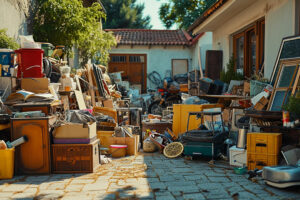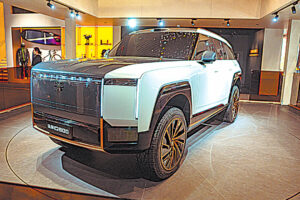For disposal

IN HER best-selling book, The Life-changing Magic of Tidying Up, Marie Kondo counsels a once-in-a-lifetime effort to tidy up space and lift the spirit. Decluttering is a matter of clearing up space. The rest is for disposal. These may include items like old records, clothes and shoes no longer worn, books (before the e-book dominated the reading library) as well as furniture and accessories that no longer provide a “spark of joy” for the owner.
Disposing of junk used to be a simple matter of throwing it away for collection by the garbage truck — old boxes, which had been recycled once too often for different uses, broken shoes no longer fit even for donating to Church bazaars, and unrepairable appliances that take up space and no longer work.
Garbage disposal is no longer the routine process it used to be. One doesn’t just throw junk together and put this in a black bag. There’s the need to segregate the different kinds of trash, separating the bio-degradable stuff from plastic and hard junk. Also, not everything that is meant to be picked by the truck is cleared. A special pick-up arrangement is needed for the big pieces.
Just go over your phone directory — the one on your mobile, of course. (The paper directory with its small print and the yellow pages that advertise and provide contact numbers was junked a long time ago.) There are listings there of people one no longer remembers, or others who have passed on. If one gets a message or call from this last category, there is no need to reply.
Even keys in the keychain one carries around every day are not all accounted for. What is this one supposed to open (or close)?
Every home has items that someone in the family (usually the father) has decreed should be left untouched, mainly because he doesn’t know what to do with them. These can include electric typewriters with that whirling ball, water-proof wristwatches for swimming, old trophies for high-school volleyball, a portable compact disc player that plays one CD at a time, and early digital cameras before phones started having more advanced settings. The retained junk collects dust and occupies storage space.
Analog junk like manual typewriters with an “e” that sticks and grandfather clocks don’t pose any disposal problem. These are expected to increase in value over time as antiques, although no longer necessarily used for their original purpose.
Old homes can be cannibalized for their wood and accent arches. Air-conditioners find some profitable use as metal junk or a prop for a sex video. Even 50-year-old Beatles records can be resurrected as vintage items and old comic books are tradeable on E-bay. Vinyl is making a comeback.
But what does digital junk have to offer? It is too obsolete to give away and may be as desirable as moldy fruit cake from last Christmas. Digital accessories are designed not to be recycled or even repaired, but replaced, totally and often. Even their parts cannot be rescued, as they are all welded together and self-destruct when pried apart.
The consumer’s revenge may be to just keep what she has until it breaks down and really needs to be replaced. This means suppressing one’s latent gadget envy (I also want the latest phone with three lenses for the camera) and resisting all conversations relating to newer models of anything — what model do you drive? One must ask what gadgets are supposed to do. If they are still providing their intended function, shouldn’t they be kept and recharged regularly?
Of course, there is a separate category for people, especially politicians. These have no “sell-by” dates to guide the consumer on expiry of usefulness, or replacement by newer models. Some can be categorized as social clutter that needs to be junked or stored away in a foreign country.
The first step in the decluttering process involves determining what to keep, and store. This category covers a wide range from antiques and collectibles to those items still being used regularly or are worth keeping even for a rainy day, like raincoats and umbrellas.
But surely for immediate disposal are bad memories that occupy too much space in the attic of the mind. Clearing these out can bring back the spark of joy.
Tony Samson is chairman and CEO of TOUCH xda




